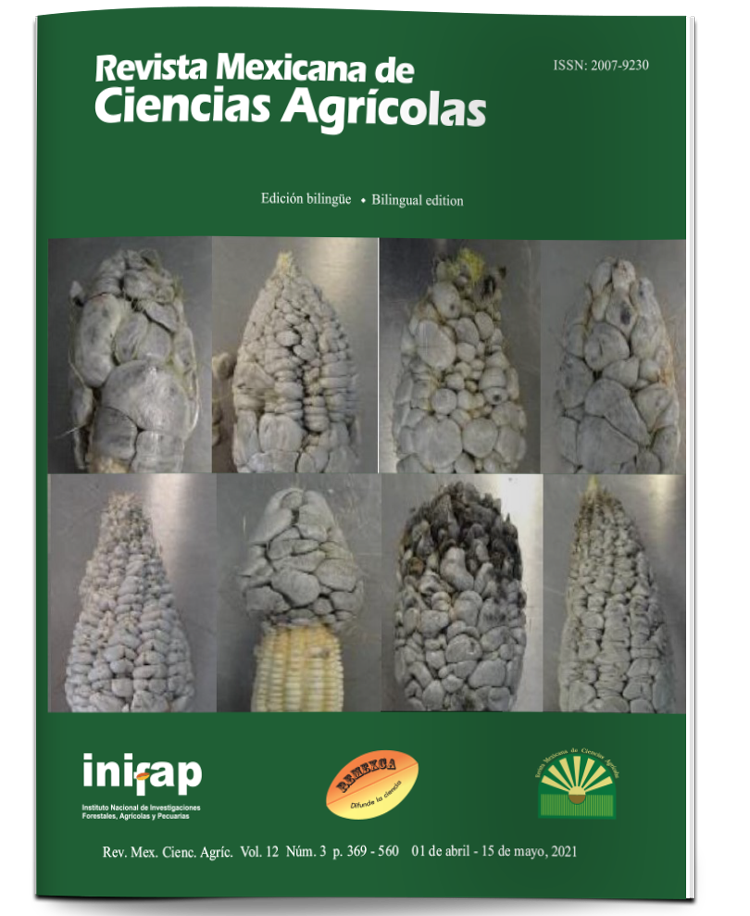Behavior of safflower elite lines high productivity and oil quality in the Yaqui Valley, Sonora, Mexico
DOI:
https://doi.org/10.29312/remexca.v12i3.2343Keywords:
oilseeds, plant breeding, productionAbstract
The safflower Carthamus tinctorius L. it is a crop that has been adopted by a large number of producers, particularly in the Northwest of the country, due to its great adaptability and its little water requirement, due to the great demands presented by the oilseed industry in the country. Since the 1970s it has been worked to generate materials that are highly productive, with good percentage and qualityof oil and with characteristics of resistance to the main diseases present in the region (false mildew and leaf rust). For this reason, the objective of this work was to evaluate the behavior of the elite safflower lines generated by the genetic improvement program in the region (23 oleic and 1 linoleic). These lines were established during cycles 2017-2018 and 2018-2019. Its agronomic behavior was evaluated under the present conditions of the Yaqui Valley. Oleic lines were found that surpassed witnesses Ciano ol and Chey ol, varieties that are widely sown in the region. In addition, it was found that the linoleic type line had better agronomic characteristics, production and oil content than witness RC-1002 which leads to the conclusion that within the evaluated lines there are potential materials to be released as a variety.
Downloads
Downloads
Published
How to Cite
Issue
Section
License
The authors who publish in Revista Mexicana de Ciencias Agrícolas accept the following conditions:
In accordance with copyright laws, Revista Mexicana de Ciencias Agrícolas recognizes and respects the authors’ moral right and ownership of property rights which will be transferred to the journal for dissemination in open access. Invariably, all the authors have to sign a letter of transfer of property rights and of originality of the article to Instituto Nacional de Investigaciones Forestales, Agrícolas y Pecuarias (INIFAP) [National Institute of Forestry, Agricultural and Livestock Research]. The author(s) must pay a fee for the reception of articles before proceeding to editorial review.
All the texts published by Revista Mexicana de Ciencias Agrícolas —with no exception— are distributed under a Creative Commons License Attribution-NonCommercial 4.0 International (CC BY-NC 4.0), which allows third parties to use the publication as long as the work’s authorship and its first publication in this journal are mentioned.
The author(s) can enter into independent and additional contractual agreements for the nonexclusive distribution of the version of the article published in Revista Mexicana de Ciencias Agrícolas (for example include it into an institutional repository or publish it in a book) as long as it is clearly and explicitly indicated that the work was published for the first time in Revista Mexicana de Ciencias Agrícolas.
For all the above, the authors shall send the Letter-transfer of Property Rights for the first publication duly filled in and signed by the author(s). This form must be sent as a PDF file to: revista_atm@yahoo.com.mx; cienciasagricola@inifap.gob.mx; remexca2017@gmail.
This work is licensed under a Creative Commons Attribution-Noncommercial 4.0 International license.



